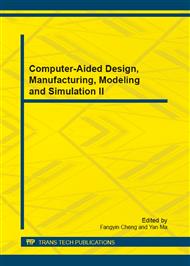p.466
p.472
p.476
p.482
p.487
p.492
p.496
p.501
p.505
Analysis on Rotating Dynamics of Tennis
Abstract:
High speed torque is very important in tennis batting process , this paper discusses the shoulder and torso rotation torque generated by the weight of tennis sports influence. Taking 48 tennis players as research objects, the rotation torque of professional tennis players are relatively outstanding with performance value,so we concluded that in the case of keeping the torso erect and through the process optimization of the rotation, we could combined shoulder movement and body bottom-up movement. These results suggested that some given hitting model can not only increase the performance of the tennis player on the pitch, but also reduce the risk of causing excessive damage.
Info:
Periodical:
Pages:
487-491
Citation:
Online since:
December 2012
Authors:
Keywords:
Price:
Сopyright:
© 2013 Trans Tech Publications Ltd. All Rights Reserved
Share:
Citation:


